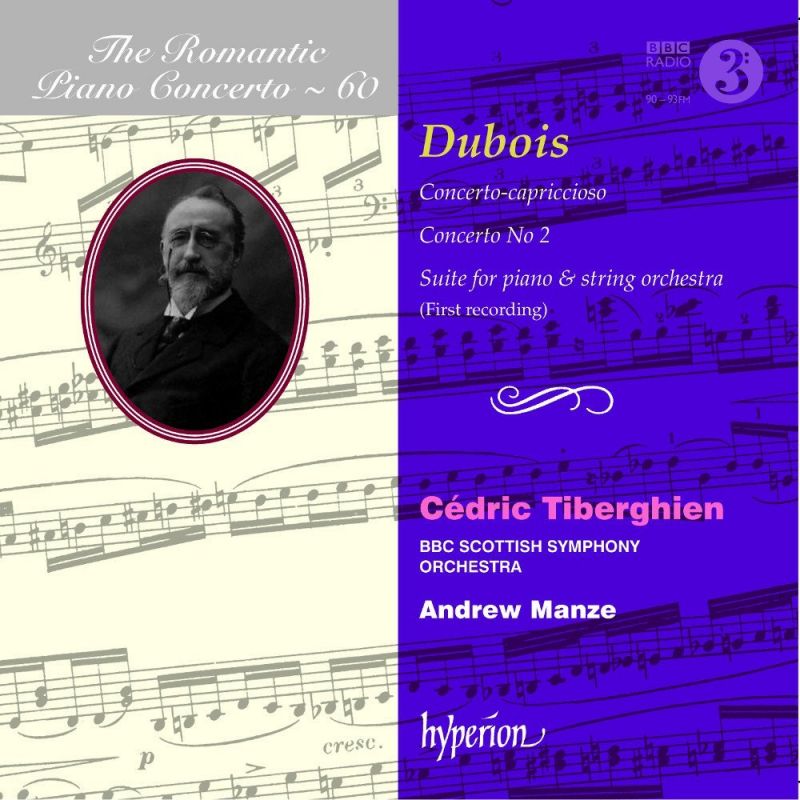DUBOIS Piano Concerto No 2. Suite for Piano and String Orchestra
The Parisian’s concertos for 60th Rom-Con piano disc
View record and artist detailsRecord and Artist Details
Composer or Director: Théodore (François Clement) Dubois
Genre:
Orchestral
Label: Hyperion
Magazine Review Date: 09/2013
Media Format: CD or Download
Media Runtime: 65
Mastering:
DDD
Catalogue Number: CDA67931

Tracks:
| Composition | Artist Credit |
|---|---|
| Concerto Capriccioso |
Théodore (François Clement) Dubois, Composer
Andrew Manze, Conductor BBC Scottish Symphony Orchestra Cédric Tiberghien, Piano Théodore (François Clement) Dubois, Composer |
| Concerto for Piano and Orchestra No 2 |
Théodore (François Clement) Dubois, Composer
Andrew Manze, Conductor BBC Scottish Symphony Orchestra Cédric Tiberghien, Piano Théodore (François Clement) Dubois, Composer |
| Suite for Piano and String Orchestra |
Théodore (François Clement) Dubois, Composer
Andrew Manze, Conductor BBC Scottish Symphony Orchestra Cédric Tiberghien, Piano Théodore (François Clement) Dubois, Composer |
Author:
Until recently, only Dubois’s Toccata in G and Fiat lux for organ remained in the active repertoire, but several new recordings of his chamber works and church music reveal a lyrical, conservative craftsman with an extensive range and output. What he lacks in individuality and consistent inspiration, Dubois makes up for in appealing melodic invention and, on this disc, imaginative orchestration.
I’m not sure that the Concerto-capriccioso (1876), the earliest of the three works, isn’t also the most effective. Its simple one-movement ABA format unfolds with a continuous plethora of ideas eagerly taken up by Cédric Tiberghien and the ever-alert Andrew Manze. The Second Piano Concerto from 20 years later has four movements, the extended first of which is a stop-start affair over-burdened with rhetorical gestures and no clear sense of direction. The slow movement is really charming (beautifully played by Tiberghien), the scherzo à la SaintSaëns terrific but all too brief, the finale launched by a large scale cadenza recapitulating all the earlier themes.
The four-movement Suite from 1917, using the same harmonic language of 40 years earlier, is a pleasant enough listen but, despite the committed artistry of Tiberghien and Hyperion’s customary top-drawer recording, is, with the other two works, not quite enough to unleash the backlash Dubois believed might be his.
Discover the world's largest classical music catalogue with Presto Music.

Gramophone Digital Club
- Digital Edition
- Digital Archive
- Reviews Database
- Full website access
From £8.75 / month
Subscribe
Gramophone Full Club
- Print Edition
- Digital Edition
- Digital Archive
- Reviews Database
- Full website access
From £11.00 / month
Subscribe
If you are a library, university or other organisation that would be interested in an institutional subscription to Gramophone please click here for further information.




